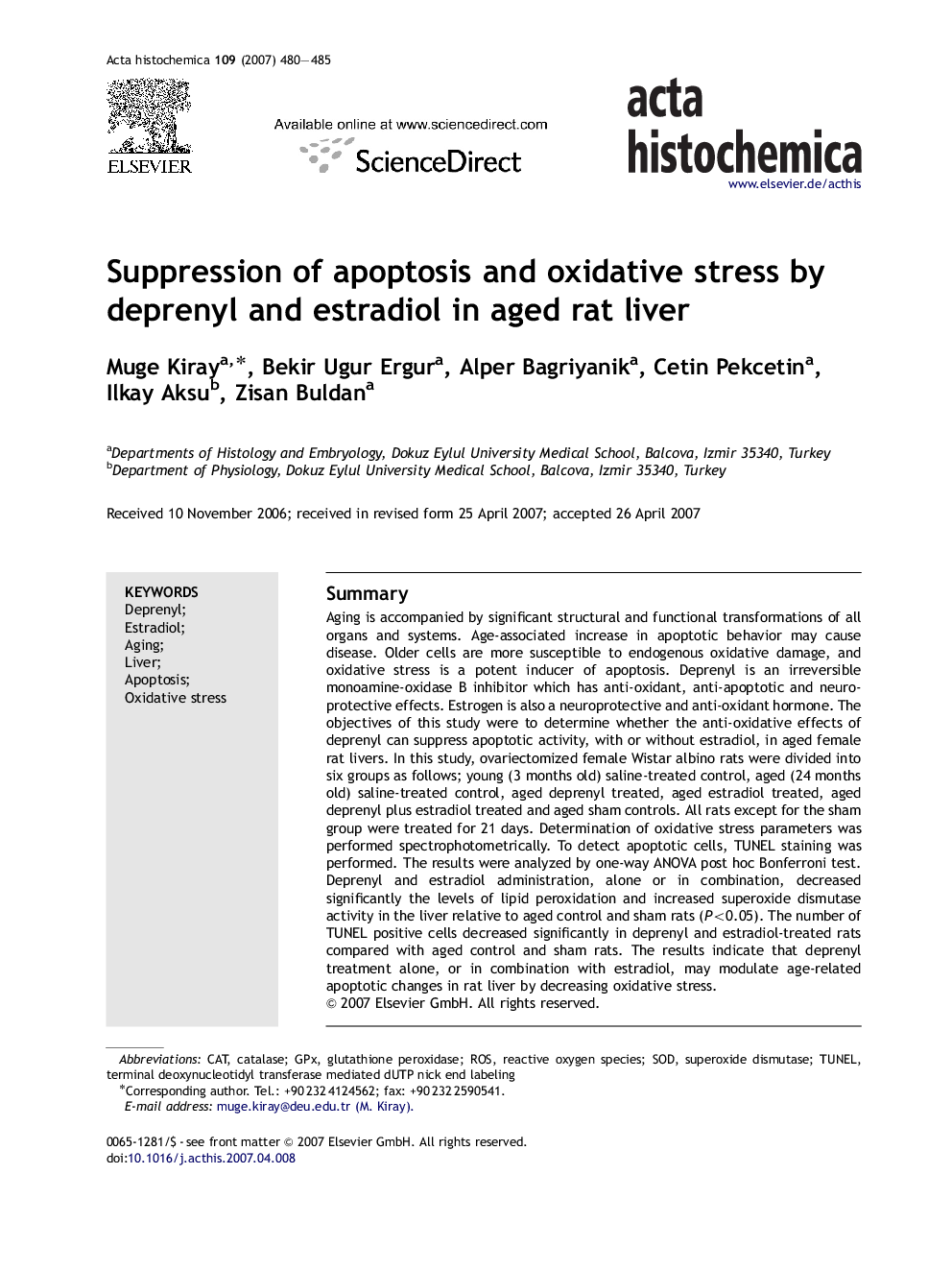| Article ID | Journal | Published Year | Pages | File Type |
|---|---|---|---|---|
| 1924313 | Acta Histochemica | 2007 | 6 Pages |
SummaryAging is accompanied by significant structural and functional transformations of all organs and systems. Age-associated increase in apoptotic behavior may cause disease. Older cells are more susceptible to endogenous oxidative damage, and oxidative stress is a potent inducer of apoptosis. Deprenyl is an irreversible monoamine-oxidase B inhibitor which has anti-oxidant, anti-apoptotic and neuroprotective effects. Estrogen is also a neuroprotective and anti-oxidant hormone. The objectives of this study were to determine whether the anti-oxidative effects of deprenyl can suppress apoptotic activity, with or without estradiol, in aged female rat livers. In this study, ovariectomized female Wistar albino rats were divided into six groups as follows; young (3 months old) saline-treated control, aged (24 months old) saline-treated control, aged deprenyl treated, aged estradiol treated, aged deprenyl plus estradiol treated and aged sham controls. All rats except for the sham group were treated for 21 days. Determination of oxidative stress parameters was performed spectrophotometrically. To detect apoptotic cells, TUNEL staining was performed. The results were analyzed by one-way ANOVA post hoc Bonferroni test. Deprenyl and estradiol administration, alone or in combination, decreased significantly the levels of lipid peroxidation and increased superoxide dismutase activity in the liver relative to aged control and sham rats (P<0.05). The number of TUNEL positive cells decreased significantly in deprenyl and estradiol-treated rats compared with aged control and sham rats. The results indicate that deprenyl treatment alone, or in combination with estradiol, may modulate age-related apoptotic changes in rat liver by decreasing oxidative stress.
